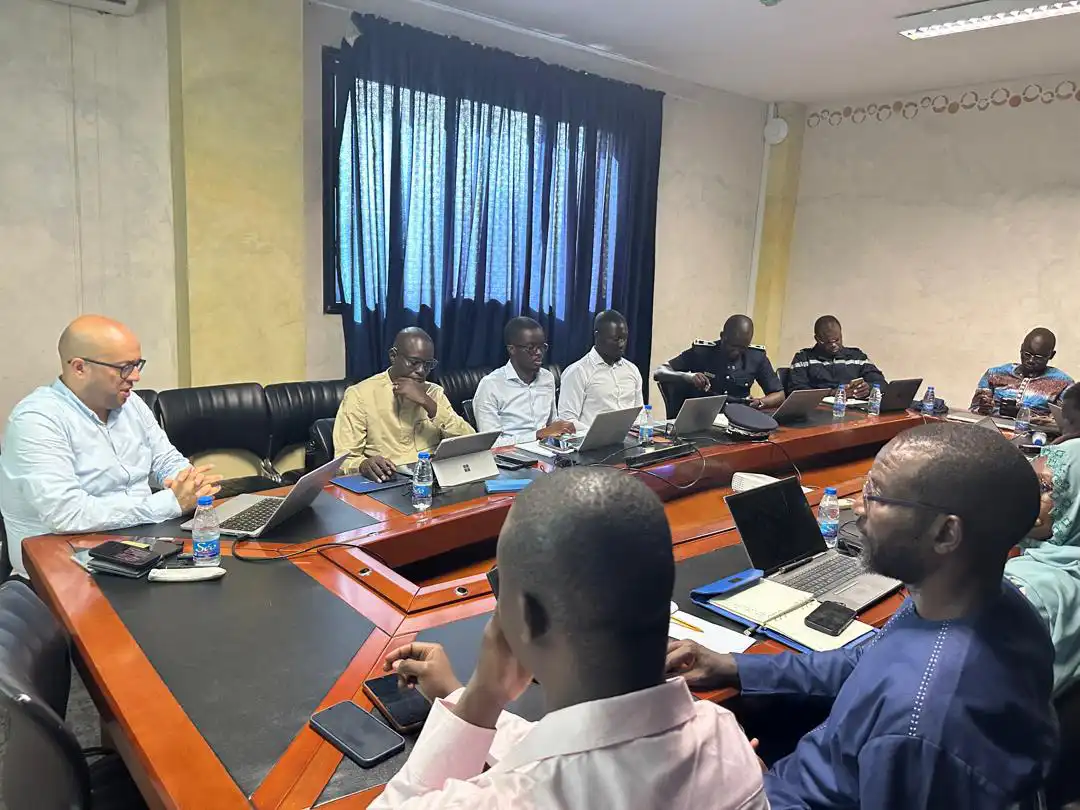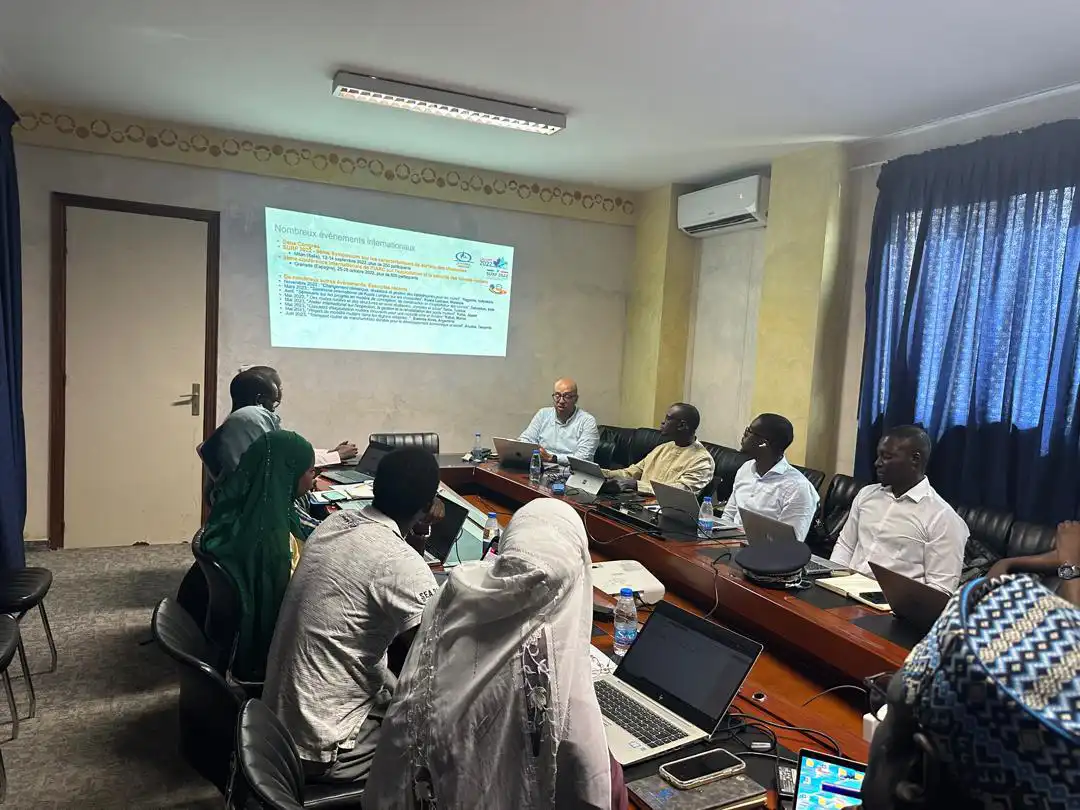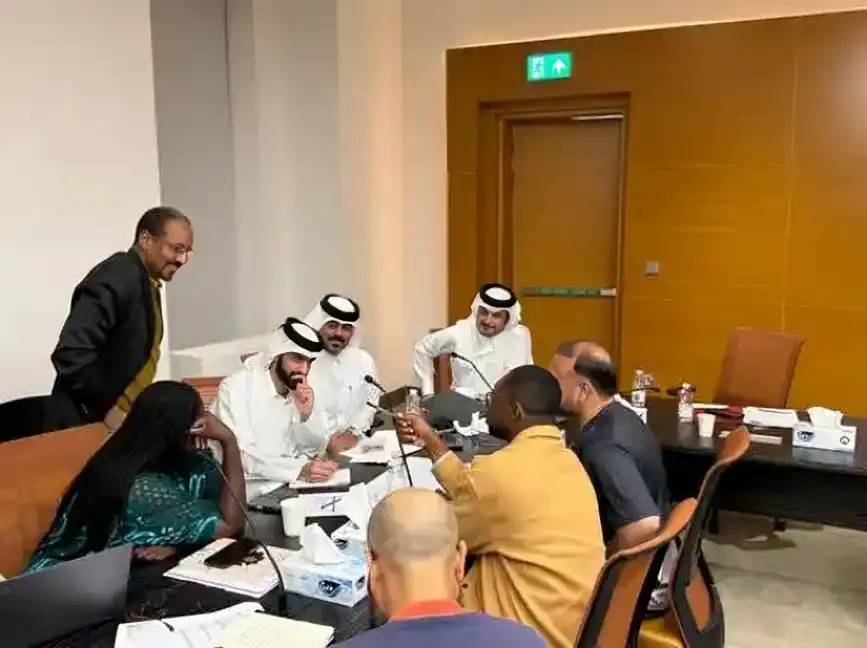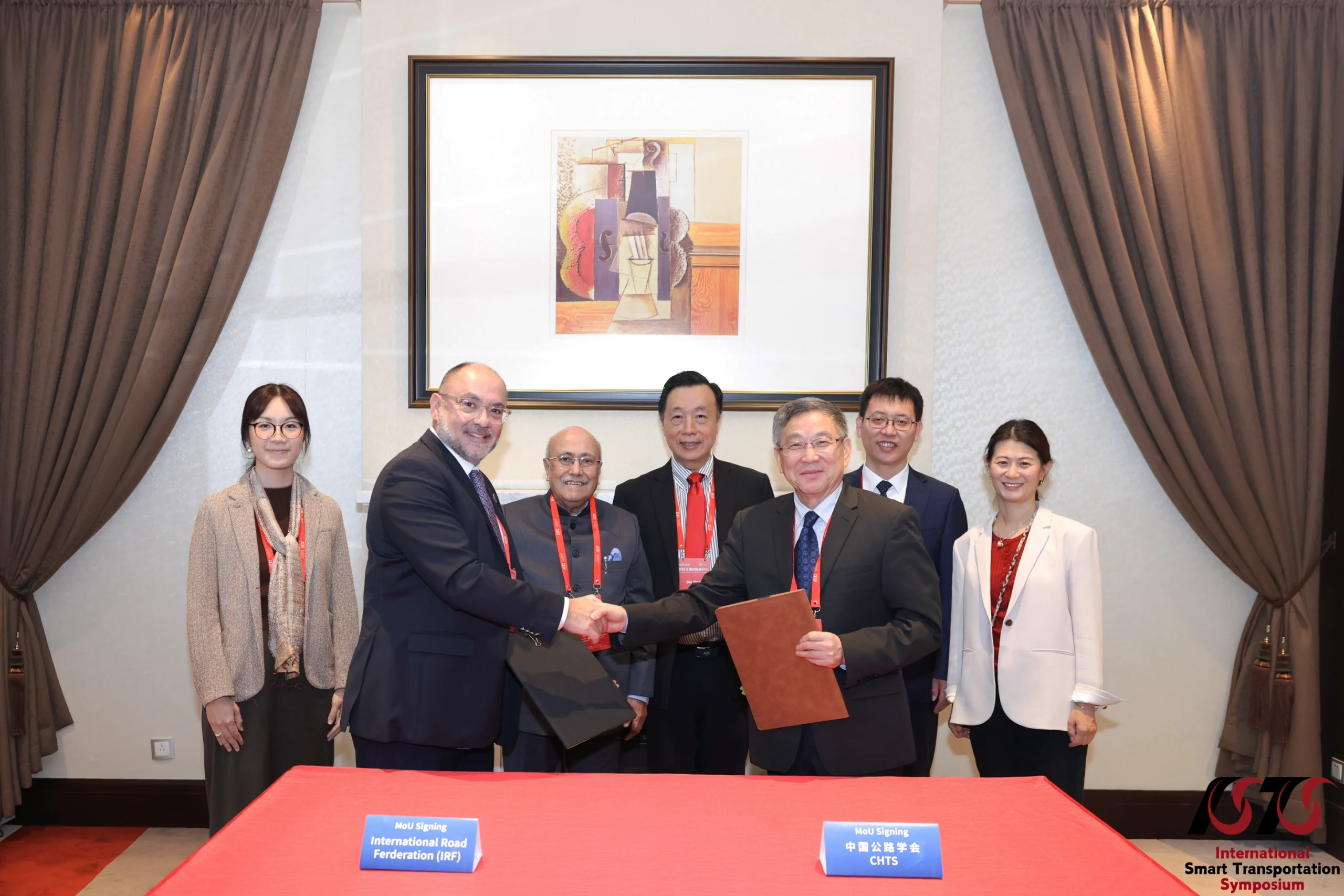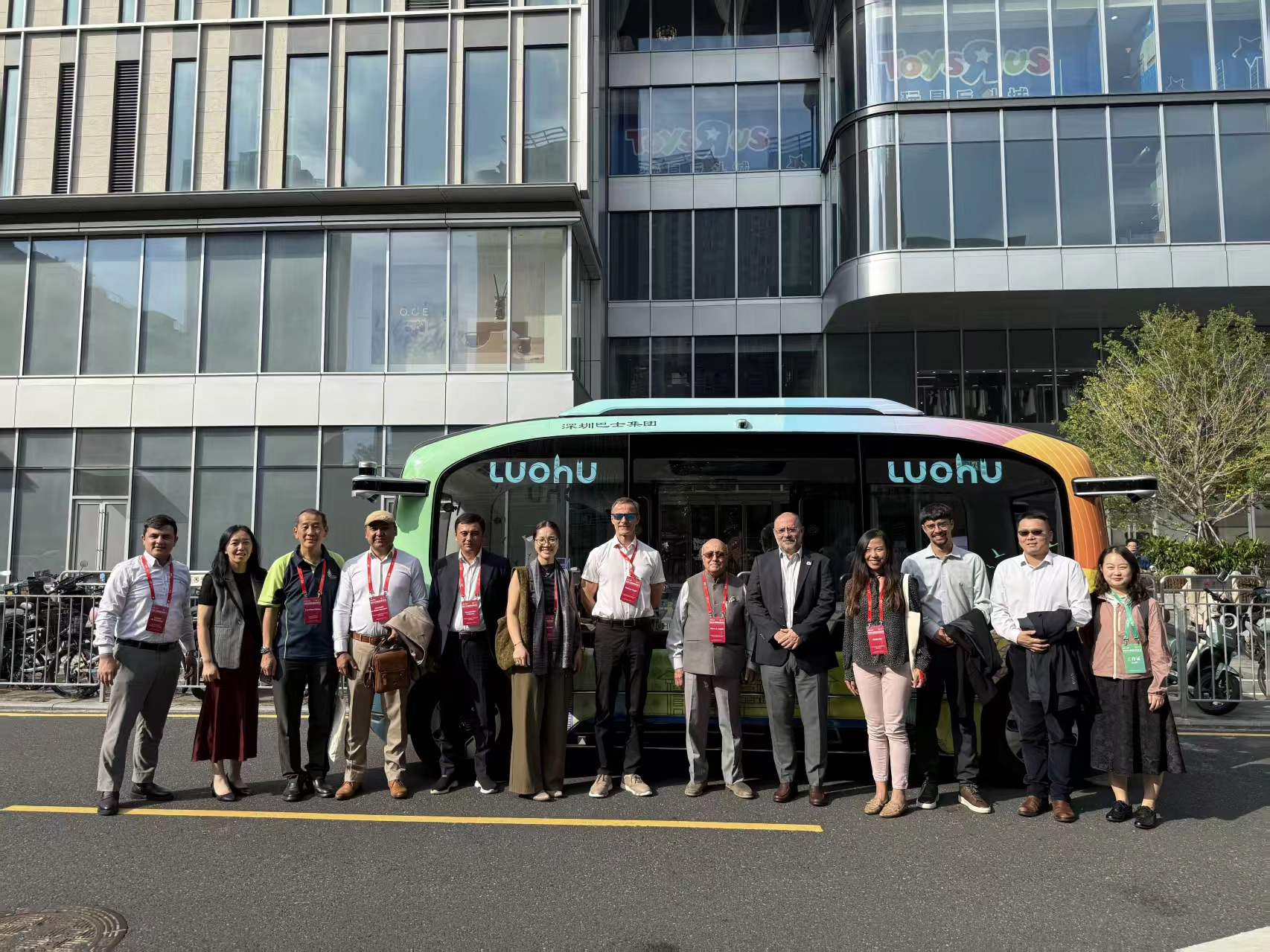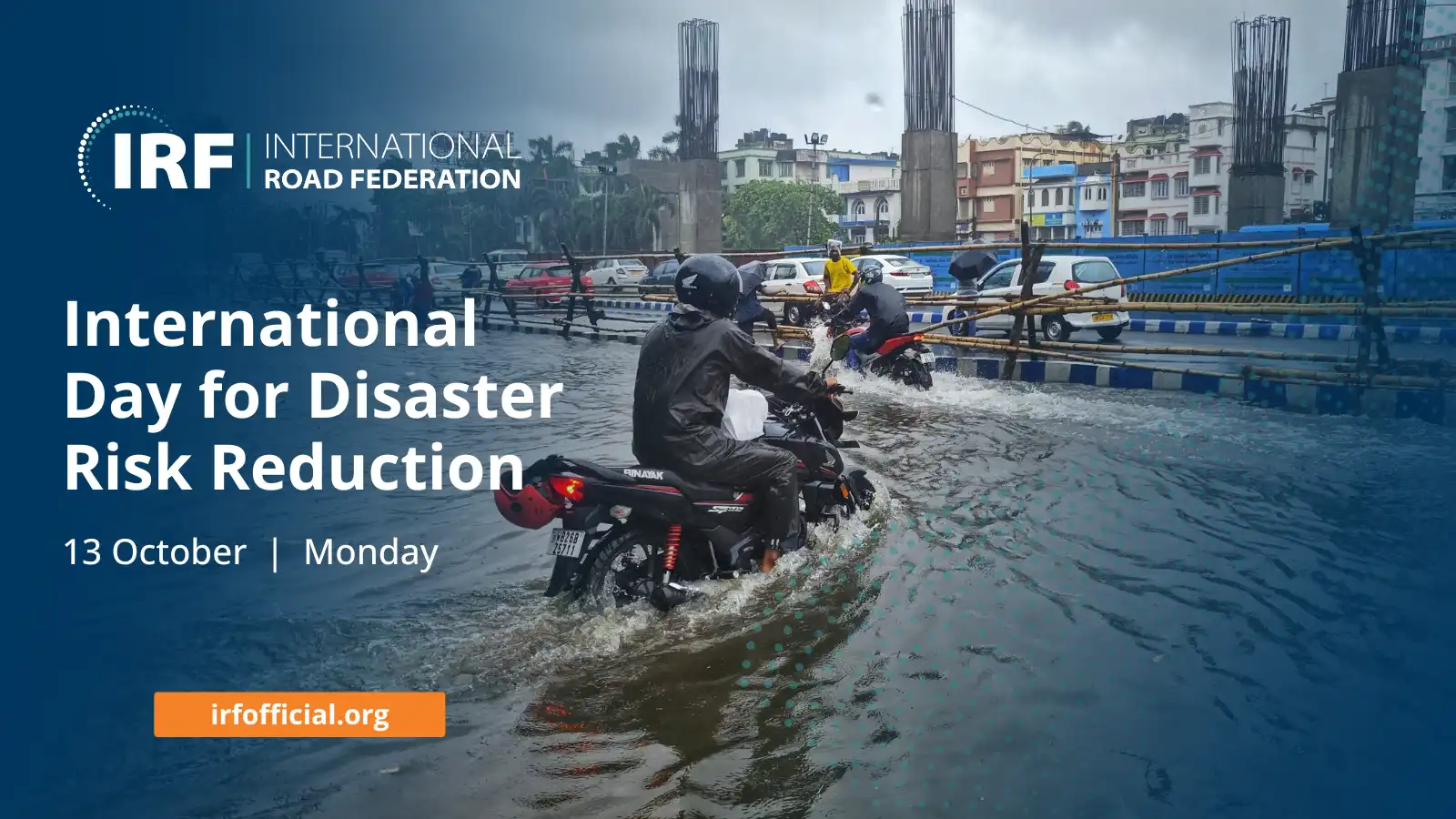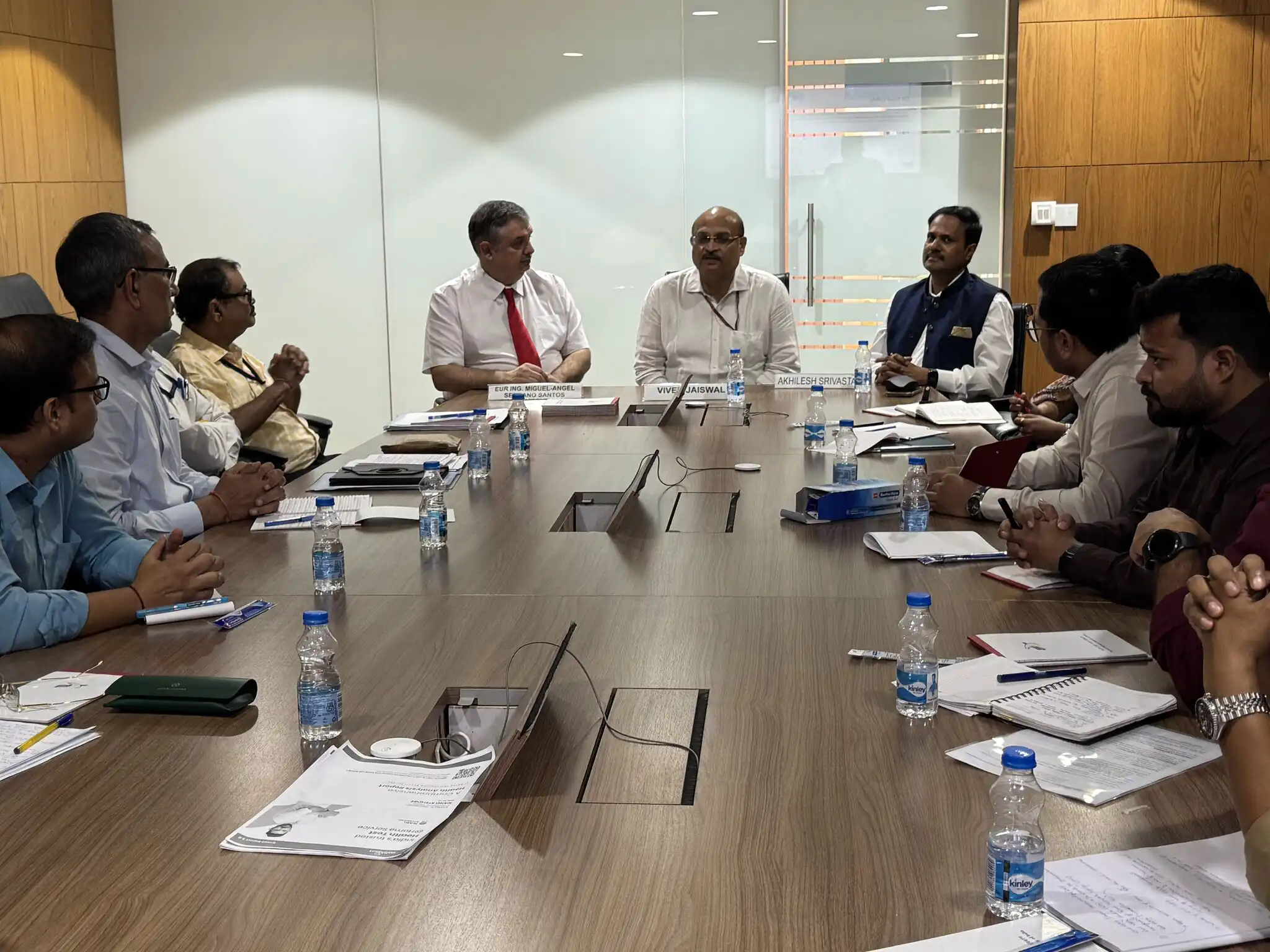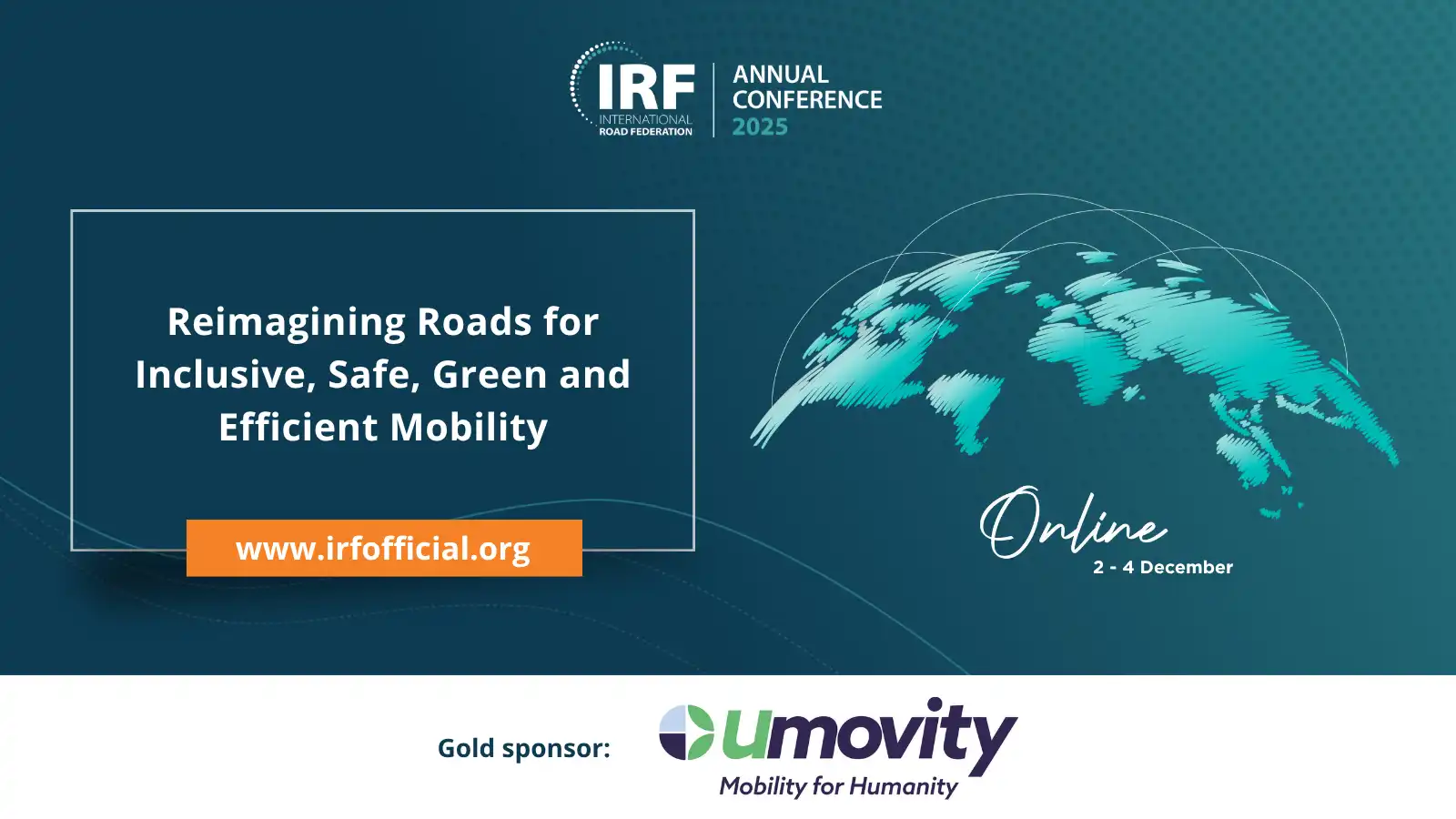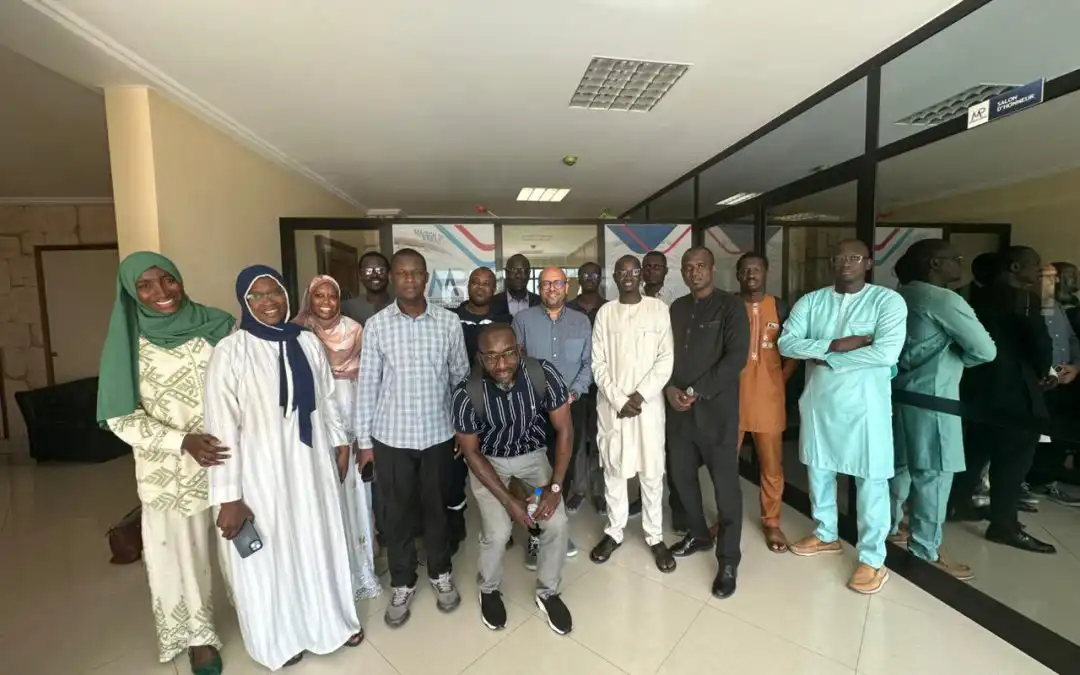MoU signing between IRF and VRCIC to Advance Cooperative Vehicle-Infrastructure Technologies
The International Road Federation (IRF) and the Vehicle-Road Collaboration Innovation Consortium (VRCIC) entered into a formal partnership through the signing of a Memorandum of Understanding (MoU) at the 2025 International Smart Transport Symposium (2025 ISTS) which underscores a shared commitment to advance research, knowledge exchange and capacity building in the fields of intelligent transportation systems (ITS) and Cooperative, Connected, and Automated Mobility (CCAM).
The IRF plays a pivotal role in advancing CCAM by fostering knowledge exchange, promoting innovation and supporting the integration of intelligent transport systems worldwide. Through its global network of members, research collaborations and capacity-building initiatives, the IRF facilitates the development of policies and technologies that enable safer, more efficient and more sustainable mobility.
The VRCIC unites industry, academia, and research institutions to accelerate Vehicle-Road-Cloud integration and promote the development of CCAM. By breaking down sectoral barriers and fostering collaboration across the road transport ecosystem, the consortium drives innovation that supports China’s leadership in intelligent mobility and aligns with national strategic goals.
The signing ceremony took place in Shenzhen as part of the high-level discussions at ISTS, where international experts, policymakers and industry leaders gathered to explore the next frontier of smart and connected mobility.
“The rapid evolution of CCAM and ITS technologies marks a defining moment for the road sector. Our partnership with VRCIC represents a shared vision to harness these innovations for public good — shaping transport systems that are intelligent yet inclusive, connected yet people-centred. Collaboration across borders will be key to turning this vision into reality.” - Dimitrios Mandalozis, President, IRF
The agreement aims to foster collaboration between the two organisations through joint research and innovation initiatives, particularly in advancing smart and connected transport technologies.
It also seeks to promote the exchange of knowledge by supporting in shared events, encouraging the open dissemination of insights and best practices. In addition, the partnership will focus on capacity building through training programmes, workshops and webinars designed to enhance professional expertise in the fields of intelligent transport and digital infrastructure.
“Our partnership with IRF marks an important milestone in advancing international cooperation on CCAM in general, and Vehicle-Road-Cloud coordination and integration in particular. This partnership reflects our shared commitment to developing intelligent, safe, and people-centered transport systems through open collaboration and technological innovation. Together, we aim to explore new pathways for CCAM and contribute to the sustainable growth of global intelligent transportation.” - Mengyong Weng, Chairman, VRCIC.
The IRF and VRCIC will support the acceleration of the development of intelligent and connected transport systems that make roads safer, cleaner and more efficient. By linking international expertise with local innovation, the two organisations aim to turn the promise of CCAM and ITS into practical tools for improving mobility, reducing emissions and enhancing quality of life.
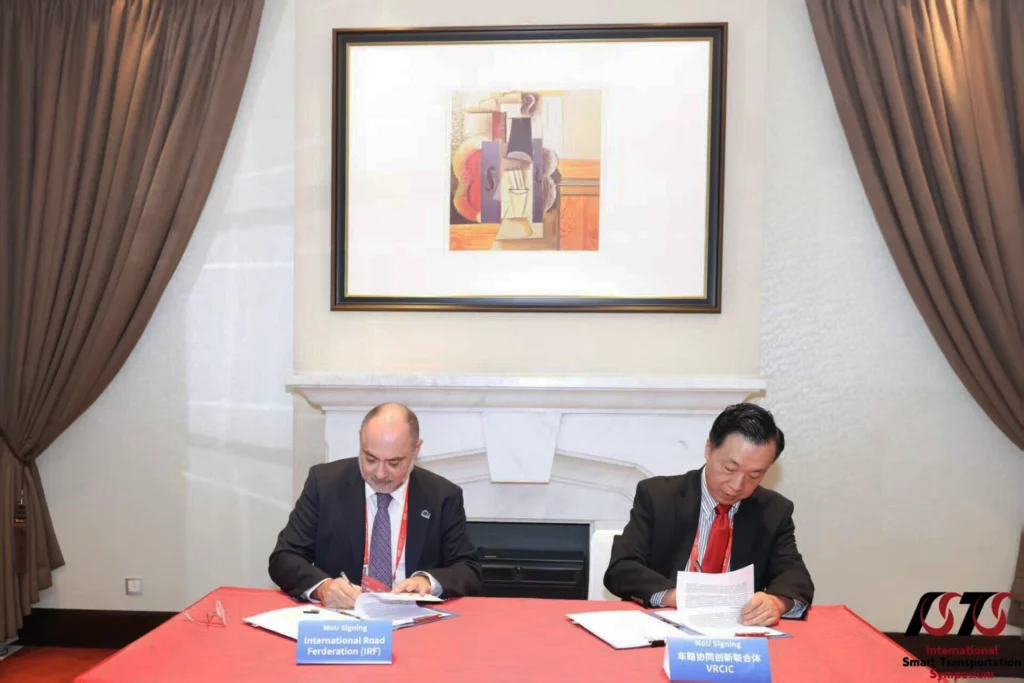
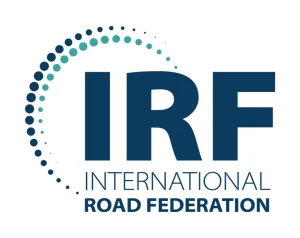
About International Road Federation (IRF)
The International Road Federation (IRF) is a global, independent, not-for-profit organisation with headquarters in Geneva, Switzerland. Active since 1948, IRF is a membership-based organisation, representing leading corporate and institutional players drawn from the road and mobility sectors worldwide. Its mission is to promote the development of roads and road networks that enable access and sustainable mobility for all. Its approach is centred on key strategic components of knowledge transfer & information sharing, connecting people, businesses, and organisations, and working on policy & advocacy.
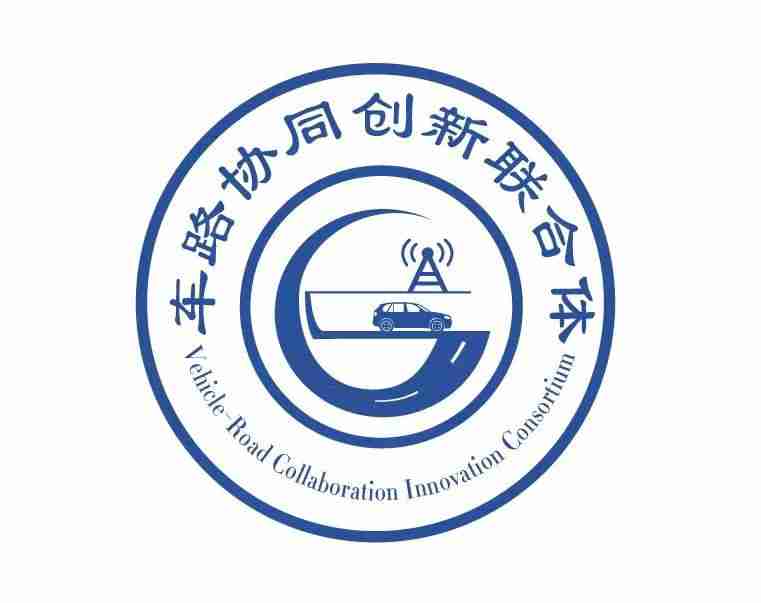
About VRCIC
Established in 2022, the Vehicle-Road Collaboration Innovation Consortium (VRCIC) unites industry, academia and research institutions to accelerate Vehicle-Road-Cloud integration, break down sectoral barriers and drive innovation across the road transport sector. Aimed at advancing China’s leadership in intelligent mobility and supporting national strategic goals, the initiative seeks to enhance technological development, industrial synergy and public travel experience.
For media inquiries or further information, please contact:
International Road Federation (IRF)
Ms Mao Macatangay
Communications Manager
mmacatangay@irfofficial.org | +41 22 306 0260
www.irfofficial.org
IRF and CHTS Strengthen Collaboration in Advancing Research in Autonomous Vehicles
The International Road Federation (IRF) and the China Highway & Transportation Society (CHTS) formalised a new chapter of cooperation with the signing of a Memorandum of Understanding (MoU) during the 2025 International Smart Transport Symposium (2025 ISTS), which focuses on critical technologies driving smart cities and intelligent transportation, including artificial intelligence, autonomous driving and vehicle-road coordination.
The IRF, a global not-for-profit organisation, is committed to enhancing road networks by promoting knowledge exchange, advocacy, and strategic partnerships. It contributes actively to transport research by generating knowledge, supporting innovation and promoting evidence-based decision-making in road and mobility development.
Through collaborative studies, technical reports and international partnerships, the IRF advances understanding of emerging transport trends, safety systems, and sustainable infrastructure solutions.
In parallel, the CHTS plays a leading role in advancing research and innovation across China’s transport sector. Through its network of experts, academic institutions and industry partners, CHTS conducts studies on road engineering, intelligent transport systems, and sustainable mobility solutions.
It supports the dissemination of research outcomes through conferences, publications and technical exchanges, contributing to the development of policies and practices that enhance the safety, efficiency, and resilience of China’s transport infrastructure while promoting global knowledge sharing in road and highway research.
The signing ceremony between the two organisations took place on the sidelines of the Symposium, which brought together leaders and innovators from government, industry and academia to explore the integration of smart cities and intelligent transport systems.
Setting the foundation for deeper collaboration in advancing research, the agreement between the IRF and CHTS also laid our opportunities for knowledge exchange and capacity building in the global road and mobility sector, with a special focus on China.
“China is an exciting ground for strategic collaboration to advance road infrastructure as an enabler of inclusive and sustainable growth. Through this partnership, we believe CHTS will play a vital role in translating the IRF’s global mandate into action in one of the world’s most dynamic economies. Together, we will strengthen the exchange of knowledge and bring regional voices into our global ecosystem of changemakers driving the future of smart and sustainable mobility.” - Dimitrios Mandalozis, President of IRF
The MoU establishes a framework for collaboration between the two parties across several key areas. It aims to advance joint research on transport challenges and opportunities, promote the exchange of knowledge through shared events and initiatives, and strengthen capacity building by developing training programmes and professional development activities. The partnership will also encourage the sharing of data and information to support innovation and sustainable progress in the transport sector.
The partnership will generate insights and evidence-based solutions that address transport challenges and opportunities, particularly in areas where innovation can improve accessibility and safety. It will also reflect across international platforms, helping disseminate best practices and promote global dialogue on sustainable mobility.
It will empower professionals with the skills needed to design and manage transport systems that are inclusive, safe, green and efficient and will help support better decision-making and innovation, enabling more efficient use of infrastructure and resources.
“CHTS has high expectation and a positive attitude towards deepening cooperation with the IRF. Currently, technologies such as AI, autonomous driving, and large-scale models are profoundly reshaping the future landscape of the mobility and transportation. China's vast application scenarios, continuously improving infrastructure, and booming market demand provide a unique stage for the innovation and practice of these technologies. Through this cooperation, we will be able to better gather the wisdom and experience from both domestic and international sources, and jointly address the challenges faced by the global road transport industry.”- Zhang Xigang, Vice President of CHTS.
The IRF and CHTS reaffirm their shared role in helping shape China’s rapidly evolving road transport landscape towards smarter and more sustainable practices, a step toward bridging national and local expertise to aid developments in the mobility and transport sectors.
-Ends-
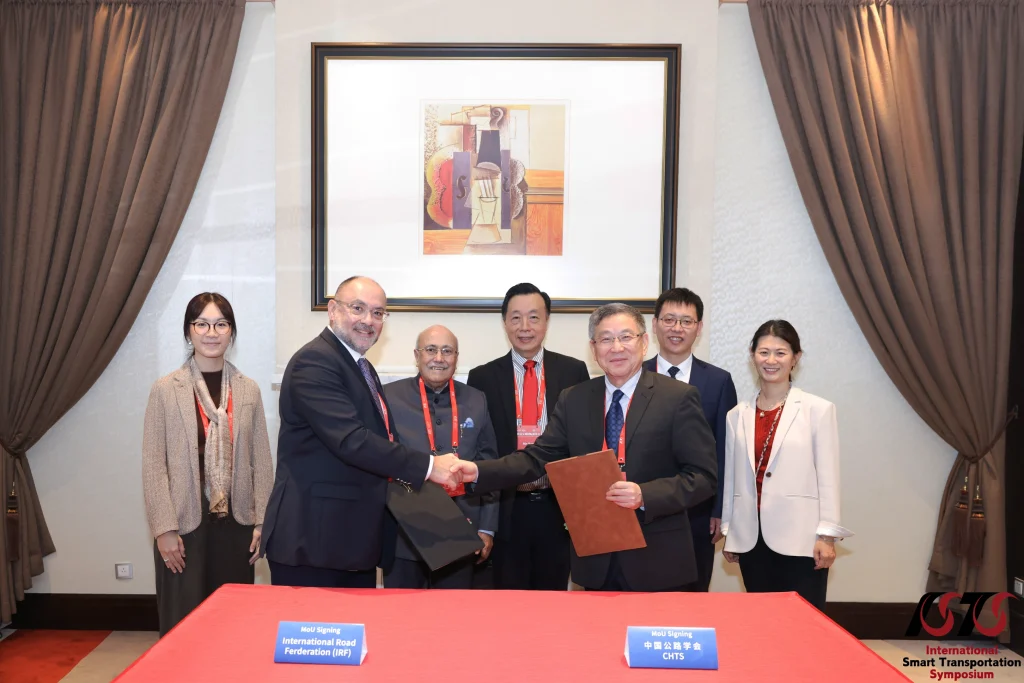

About International Road Federation (IRF)
The International Road Federation (IRF) is a global, independent, not-for-profit organisation with headquarters in Geneva, Switzerland. Active since 1948, IRF is a membership-based organisation, representing leading corporate and institutional players drawn from the road and mobility sectors worldwide. Its mission is to promote the development of roads and road networks that enable access and sustainable mobility for all. Its approach is centred on key strategic components of knowledge transfer & information sharing, connecting people, businesses, and organisations, and working on policy & advocacy.

About CHTS
CHTS, founded in May 1921, is the earliest national, academic and non-profit social organization of scientific and technological workers and units from China highway, transportation and other related fields. CHTS currently has 14 technical sub-societies including Road Engineering, Bridge and Structure Engineering, Urban Transportation and Maintenance and Operation. It has two expert bodies consisting of the Academic Advisory Committee and the Youth Expert Advisory Committee and three specialised work groups, providing strong support for information exchange, engineering consultation and project evaluation.
For media inquiries or further information, please contact:
International Road Federation (IRF)
Ms Mao Macatangay
Communications Manager
mmacatangay@irfofficial.org | +41 22 306 0260
www.irfofficial.org
Driving Innovation: IRF and CHTS Strengthen Collaboration in Smart Mobility Research
As part of the 2925 International Smart Transport Symposium (ISTS) co-hosted by the China Highway & Transportation Society (CHTS) and the IRF, the delegation visited Shenzhen and Beijing to explore pioneering examples of smart and sustainable mobility in action.
The visit forms part of the lead-up to the 2025 International Smart Transportation Symposium, which will focus on forward-looking and critical technologies in smart cities and smart transportation and their integrated domain. The Symposium will feature thematic presentations, high-level discussions, exhibitions, achievement releases, international competitions and academic paper submissions. It will gather government representatives, international organisation leaders, industry innovators, institutions and renowned experts to exchange insights on industry hotspots, cutting-edge topics and emerging innovations shaping the future of mobility.
In Shenzhen, the delegation visited Shenzhen Bus Group and WeRide to experience the city’s cutting-edge autonomous bus service. Shenzhen’s B888 Route, a Level 4 autonomous bus line, connects the Luohu Port border crossing to the MixC Mall. Equipped with over 20 advanced sensors, including lidar and high-definition cameras for 360-degree perception, these buses operate safely under the supervision of onboard safety personnel. The IRF delegation also learned about another pilot in the Qianhai District, where 20 self-driving minibuses operate across four routes, demonstrating how automation is enhancing daily urban mobility.
Continuing their study tour, the IRF delegation met with officials from the Tongzhou District Government in Beijing to gain insights into the district’s forward-thinking sustainable transport strategy. As Beijing’s urban sub-center, Tongzhou is redefining connected and low-carbon urban living through comprehensive planning and smart infrastructure.
Tongzhou’s ambitious “three-fast, two-main” road system and “eleven-horizontal, nine-vertical” backbone network have strengthened connectivity between the sub-center and central Beijing. The East Sixth Ring underground reconstruction project, China’s longest shield highway tunnel, has further improved mobility and reconnected previously divided urban areas.
Through its Smart Traffic 3.0 Expansion Project, Tongzhou has modernised more than 580 intersections with intelligent signal controls, real-time data integration and over 17,000 sensing devices. These advancements have increased arterial road speeds by 11% and reduced average vehicle delays by 32%, illustrating the tangible benefits of digital transformation in urban mobility management.
At the same time, the district continues to promote active and inclusive mobility by upgrading walking and cycling networks to enhance accessibility, comfort and safety for all road users.
The CHTS played a vital role in facilitating these meaningful exchanges with local authorities, enabling IRF representatives to gain first-hand insights into China’s innovations in transport technology and policy.
Representing IRF were Mr. Dimitrios Mandalozis, President of the International Road Federation, and Ms. Alice Yiu, Head of Advocacy and Outreach, who engaged with key counterparts including Mr. Han Song, Deputy District Head of Tongzhou District; Mr. Jia Fei, Director of the Transportation Comprehensive Affairs Center of Tongzhou District and Ms. Guan Nina, Director of the International Cooperation Department of CHTS.
IRF extends its gratitude to Shenzhen Bus Group and WeRide for their impressive demonstrations and insights into the real-world deployment of autonomous transport. Pilot projects such as these are essential for informing and inspiring the scaling of smart, sustainable mobility solutions in cities worldwide.
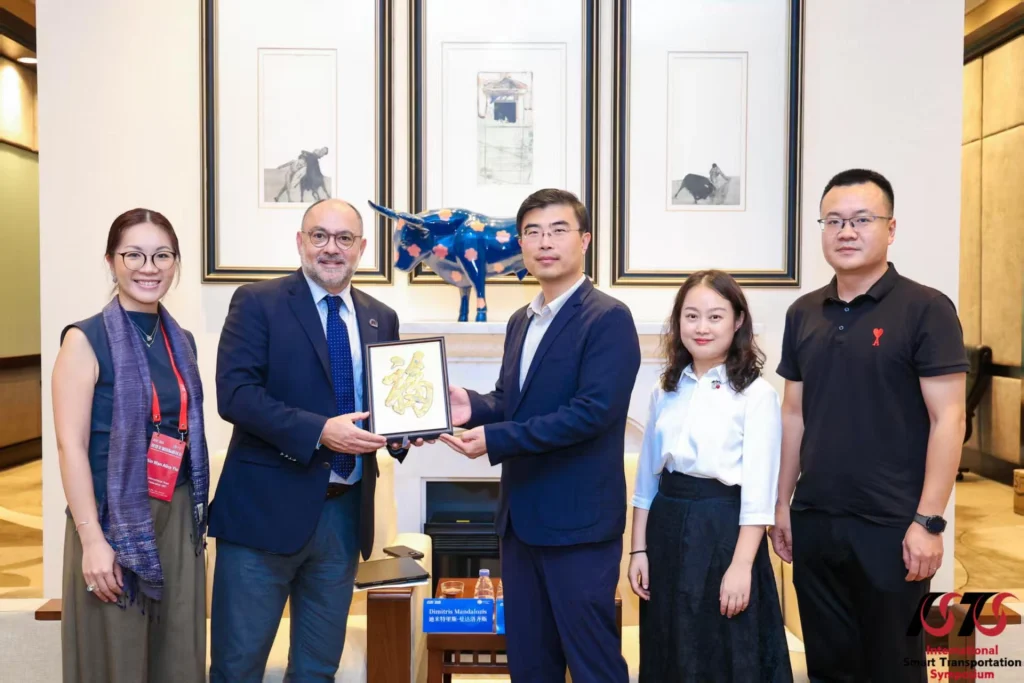
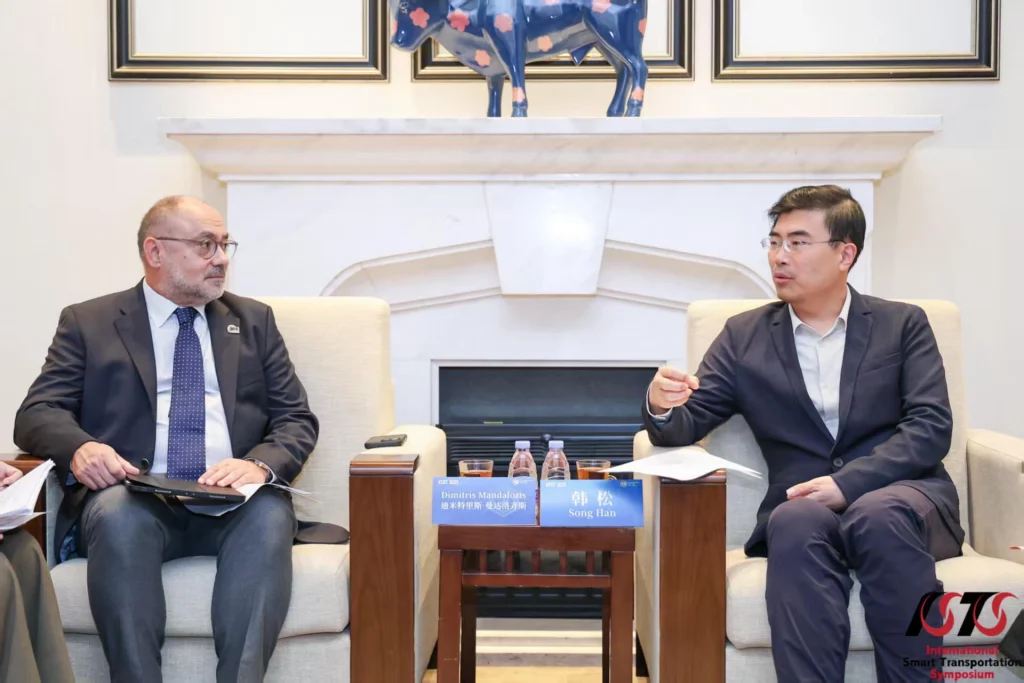
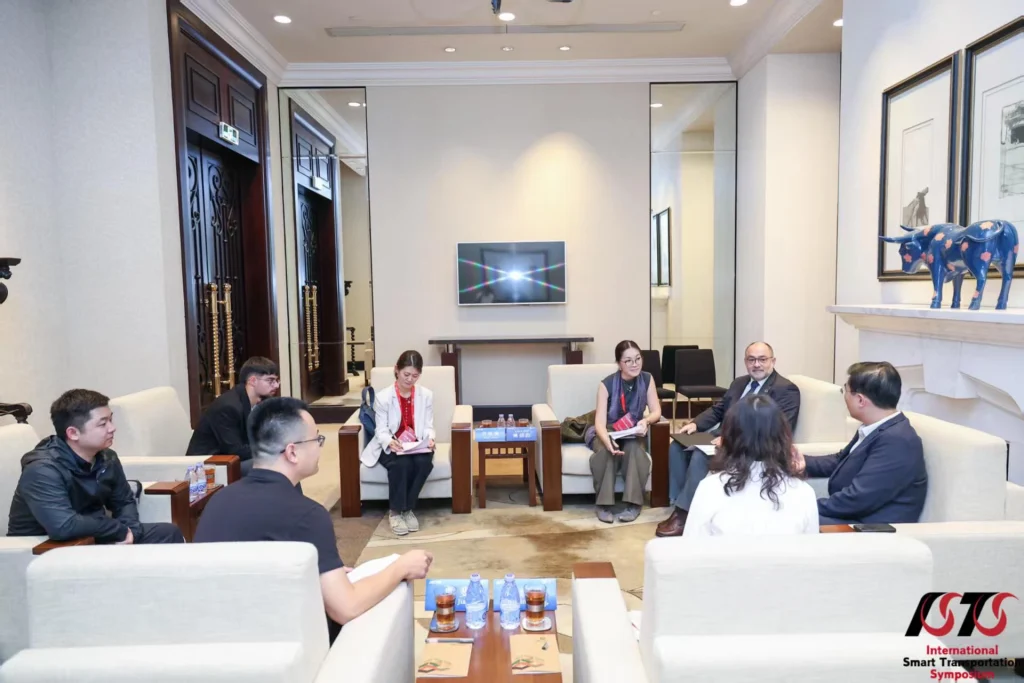
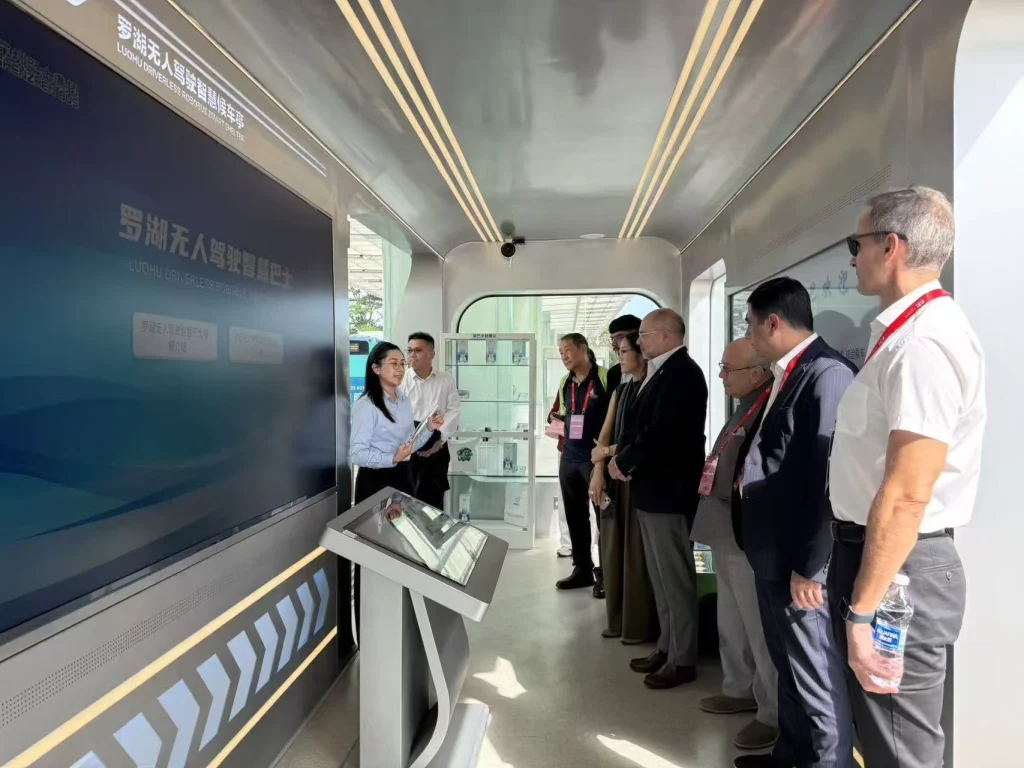
Hi-Drive Webinar Explores the Technology Enablers for Higher Vehicle Automation
15 October | Online - IRF and the Hi-Drive European Project recently hosted a webinar titled “Technology Enablers for Higher Vehicle Automation & Operations: Testing Performance and Reliability of ADFs for Extending and Fragmenting ODDs.”
The webinar gathered experts and innovators from across Europe to explore how advanced technologies are paving the way for safer, smarter and more connected mobility and showed how testing methods directly shape the vehicles, road systems and safety technologies we use every day.
Hi-Drive is at the forefront of efforts to extend and harmonise Operational Design Domains (ODDs), the real-world conditions under which automated vehicles can operate safely. By focusing on critical technology enablers such as Vehicle-to-Everything (V2X) communication, high-precision positioning, cybersecurity and machine learning, the project tackles some of the toughest challenges to achieving trustworthy, scalable automation.
These innovations aim to make automated driving more reliable and responsive to the diverse realities of Europe’s road networks, both urban and rural, national and cross-border.
Turning Research into Real-World Results
During the webinar, Christina Anagnostopoulou from the Institute of Communication and Computer Systems (ICCS) and Luisa Andreone, Stellantis-CRF, shared how Hi-Drive has been testing Automated Driving Functions (ADFs) in diverse environments. The topics covered a scenarios ranging from controlled test tracks to public roads with real traffic and weather conditions. Having conducted over 120 experiments across Europe, the project’s partners are generating valuable insight into how automation can perform safely and consistently in complex scenarios, such as low visibility, cross-border travel, and mixed traffic.
The initiative also relies on advanced data engineering tools to ensure transparent, high-quality analysis across all trials, an essential step in building public confidence in automated transport. As Luisa Andreone, Stellantis-CRF, explained, the project “is pushing towards robust and reliable automated driving, extending and defragmenting ODDs whilst ensuring interoperability across countries and brands.”
A Step Forward for Safer, Smarter Mobility
By connecting research with policy and practice, Hi-Drive exemplifies how technological innovation can contribute to safer and more sustainable transport systems. The integration of automation, connectivity, and data-driven learning has the potential to reduce crashes, optimise traffic flow and support greener, more efficient mobility across regions.
“Hi-Drive’s operations are designed to test automated driving functions under a variety of real-world conditions, such as those exhibited in closed-track simulations and public-road trials, to ensure their safety and reliability.” - Christina Anagnostopoulou
The project’s outcomes will be showcased at the Hi-Drive Final Event: “Bridging the Gaps in the ODD,” which will be held on 25th November 2025 at the AutoWorld Museum in Brussels.
Together with partners like Hi-Drive, the IRF continues to advocate for innovation, making roads not only more advanced but also safer, cleaner, and more accessible for all.


Introducing the IRF Start-Up 2025 Finalists
We are pleased to announce the finalists for the IRF Start-Up Label 2025.
The 5th edition of the Start-up Label was launched in May to highlight the IRF’s commitment to innovation and its active engagement with the global start-up community.
Applications closed with submissions from five continents, focusing primarily on road safety, efficiency and sustainability.
Following a competitive selection process, six finalists have been shortlisted, with one outstanding start-up set to be proclaimed the winner of the IRF Start-up Label 2025 during the IRF 2025 Annual Conference.
Abley Limited - SafeCurves
https://abley.com/en-us/
Abley is a New Zealand-based consultancy specialising in transport planning, road safety, geospatial technology and location intelligence. Since 2003, we’ve partnered with governments and organizations across New Zealand, Australia, North America and Asia to deliver pragmatic, people-focused transport solutions. Guided by the Safe System approach, we develop strategies and infrastructure that enhance safety, access, and mobility. Our multidisciplinary expertise helps clients make data-driven decisions, reduce costs, and create more sustainable, efficient, and inclusive transport systems for current and future generations.
Blue Eye Highway
https://www.blue-eye-highway.com/
Blue Eye Highway is an award-winning road safety start-up developing the world’s first passive black ice detection road stud. Our patented system uses cryogel technology to provide a visual warning when roads are icy - no power, sensors, or connectivity required. Designed for retrofit, our device improves safety for drivers, cyclists, and pedestrians while supporting climate resilience and smart infrastructure goals. With trials planned across the UK and Ireland, we are shaping the future of road safety infrastructure.
DataMobalize
https://datamobilize.net/
DataMobilize is a youth-led start-up based in Yaoundé, Cameroon. It is dedicated to improving road safety through digital innovation. Its flagship Road Safety Observatory - the first in Cameroon, available via a mobile app and website, enables real-time reporting of hazards, reliable data collection, and actionable insights to guide safer mobility policies. By placing young people at the heart of road safety solutions, DataMobilize fosters evidence-based decision-making and contributes directly to the UN Decade of Action for Road Safety 2021–2030.
EcoPals GmbH
www.ecopals.de/en
We are Ecopals, a clean tech company transforming plastic waste into high-performance additives for road construction.Through our flagship solution, EcoFlakes, we help asphalt producers reduce reliance on virgin materials, cut production costs, and lower carbon emissions. Built on a circular value chain, we partner with recyclers and industry leaders to deliver scalable, locally adaptable solutions. With proven results on public and private roads, we are driving a more sustainable, efficient, and climate-resilient future for infrastructure.
Green Bitumen
https://bitchem.com/
BitChem Cold Mix DBM (Dense Bituminous Macadam) and BC (Bituminous Concrete) are sustainable bituminous layers developed by BitChem, a pioneer in green road technologies. Using its patented tailor-made cold mix, BitChem enables aggregate coating at ambient temperatures, eliminating the need for heating. This cold mix technology supports the construction of base (DBM) and surface (BC) courses in flexible pavements, ideal for low to medium traffic corridors and green road initiatives, offering an eco-friendly alternative to conventional hot mix applications.
ErnKate LIMITED
https://www.ernkate.com/
Ernkate Limited, established in 2011 in Zambia, is an innovative ICT company dedicated to enhancing road safety. The organisation develops unique products such as vehicle speed monitoring, road condition alerts, and IoT solutions to reduce road traffic crashes and save lives. Its mission is to achieve zero road traffic incidents through reliable technology and proactive safety services. With a skilled team, Ernkate serves transport agencies, government bodies and the public, committed to making roads safer through innovative solutions.
By obtaining the IRF Startup Label, companies benefit from IRF’s official endorsement for one year. This will demonstrate credibility and earn sustainable trust with the company's stakeholders. The endorsement includes benefitting from IRF’s most valuable assets, which include knowledge, expertise, exposure and networking opportunities.
Building Resilient Roads for a Safer and Connected Future
31 October | International Day for Disaster Risk Reduction (IDDRR) reminds us of the urgent need to strengthen our resilience against natural and human-induced disasters. Resilience in this context goes beyond constructing strong infrastructure; it calls for smart operations, sustainable financing, and climate readiness across all levels of the transport system.
Resilient road systems stand on four pillars:
- Structural resilience- ensures roads are designed and built using durable standards and materials
- Operational resilience - keeps traffic moving during crises through redundancy, contingency routes, and intelligent systems
- Economic and financial resilience - secures the resources needed to sustain maintenance and services during difficult times
- Climate resilience - equips networks to withstand and recover from the increasing impacts of extreme weather.
IDDRR highlights that proactive planning, sustainable infrastructure and global cooperation are key to minimising disaster impacts and safeguarding lives.
Disaster-struck infrastructure
Natural calamities expose weaknesses in how we design, maintain, and plan road infrastructure and road networks. It only takes one disaster to break open a host of issues that endanger motorists, vulnerable road users and emergency responders.
Extreme weather events can cripple transport networks within hours. Floods wash away bridges, landslides block highways and debris flows isolate towns and villages. In emergencies, road accessibility often determines who can be rescued, treated and supplied. It can literally mean the difference between life and death.
These challenges expose the urgent need for infrastructure that protects lives, sustains economies, and keeps communities connected before, during, and after disasters.
Recognising projects that prioritise resilience
For the IRF, disaster risk reduction is inseparable from its mission to advance safer, more resilient roads worldwide. Roads are not only vital for daily mobility and economic activity. During crises, they become lifelines for evacuation, emergency response, and relief distribution.
IRF continues to advocate for road systems that can withstand changing climate conditions and extreme events. By integrating risk assessments, sustainable materials and innovative design standards, transport networks can significantly reduce their vulnerability to disasters.
This commitment to resilience is reflected in IRF’s Circle of Excellence, which recognise outstanding projects and innovations that embody sustainability, safety, and climate readiness in the road and mobility sectors.
Through these awards, IRF celebrates the engineers, policymakers, and organisations whose visionary work strengthens the resilience of transport systems.
IRF Circle of Excellence for Resilience
The Digital-technology-based Daloushan Mountains Extra-long Tunnels Emergency Management Technology Package Project by Guizhou Expressway Group Co., Ltd., Jiaoke Transport Consultants Ltd., and Guizhou Zhongnan Transportation Technology Co., Ltd., uses five innovative technologies applied to the tunnels for safe, green, efficient and intelligent tunnel operation and management.
It gives warnings to management and control technology, monitoring 97.4% of traffic incidents and gives an earlyrning-based response time in less than 30 seconds. It also integrates ventilation and energy conservation technology, saving 2 million kWh of power every year. Finally, it gives fire-control partition water supply technology, improving water supply safety and resilience by 50%.
The MAWIS (Mobile Advanced Road Weather Information Sensor) Project by Egis offers transformative advancements in enhancing sustainability and operational efficiency, particularly in preventive inter-maintenance. The sensors allow for the anticipation and response to sudden weather changes.
This targeted approach improves safety and reduces environmental impact by minimising chemical usage, contributing to more sustainable maintenance practices. With MAWIS, 1,300 tonnes of carbon dioxide were reduced, with total carbon emissions going down by 5%
The Climate Informed Digital Road Asset Management System (iROADS) for Kerala PWD by the Transport Research Laboratory (TRL) offers an integrated platform for climate-smart planning, efficient budgeting and informed road decisions.
Kerala is a high-performing state in Southern India with a human development index among the nation’s highest and a population about 35 million. It boasts an impressive 332,000 kilometres of road network. The platform addresses Kerala’s rising climate threats. Climate-smart planning looks to reduce the over 4,700 landslides the region experiences in one season.
Boosting climate resilience preparedness saved about USD 2.63 million on core road network maintenance.
Excellence in resilience
These award-winning initiatives exemplify how innovation, foresight, and collaboration can transform road infrastructure into systems that endure disasters and actively prevents them from becoming humanitarian crises. From intelligent tunnel management and adaptive weather sensors to climate-informed asset planning, these projects show that resilience is achievable when technology, policy, and purpose align.
As the world observes the International Day for Disaster Risk Reduction, the IRF Circle of Excellence stands as a testament to what’s possible when resilience becomes a shared priority. Each recognised project reflects IRF’s unwavering mission to advance safe, sustainable, and climate-ready road systems that keep communities connected before, during, and after disasters.
Stay tuned for more stories and insights from the IRF Circle of Excellence, celebrating global leadership and innovation in building resilient transport systems.
IRF launches International Registry for Road Safety Auditors Training Programme in India
New Delhi, India | 10 October - IRF has launched the International Registry for Road Safety Auditors, a 10-day certified training programme for engineering professionals.
The training programme, made possible by the National Highway Authority of India (NHAI) and the IRF India Chapter (IRF-IC) and with the support of TotalEnergies Foundation, is designed for engineers and professionals engaged in highway development, road construction, traffic engineering and urban transport planning.
It combines theoretical knowledge, case-based learning and on-ground fieldwork to strengthen participants’ capacity to identify and mitigate road safety risks throughout all stages of road project development - key competencies in conducting effective road safety audits.
The course is being facilitated by the IRF Lead Trainer, Miguel-Angel Serrano Santos, integrating the Safe Systems Approach and Vision Zero strategies in road audit practices.
Building on successful implementations in Tanzania, the United Kingdom, Uganda and Australia, the Registry’s expansion to India underscores IRF’s continued commitment to establishing globally harmonised standards in road safety audits.
Key features of the training include modules on:
- Legal and institutional frameworks
- Safe System and Vision Zero strategies
- Crash data analytics and blackspot identification
- Economic evaluations
- Road design audits and VRU (Vulnerable Road User) safety
- iRAP tools
- Road work zone safety
In his message, Kiren Kapila, President Emeritus of IRF, acknowledged the contribution of TotalEnergies Foundation to promoting this global training programme for auditors, encouraging participants to maximise their learning for real-world application.
Speaking at the inauguration, Chief General Manager of NHAI Vivek Jaiswal, lauded IRF’s efforts in advancing road safety capacity-building and reaffirmed NHAI’s support for the initiative.
Upon successful completion of the training, participants will become accredited Road Safety Auditors under the IRF International Registry, a global community of qualified professionals dedicated to improving road safety standards worldwide. These accredited auditors gain access to new opportunities to contribute to safer road projects worldwide, while supporting the global effort to reduce road fatalities and injuries.
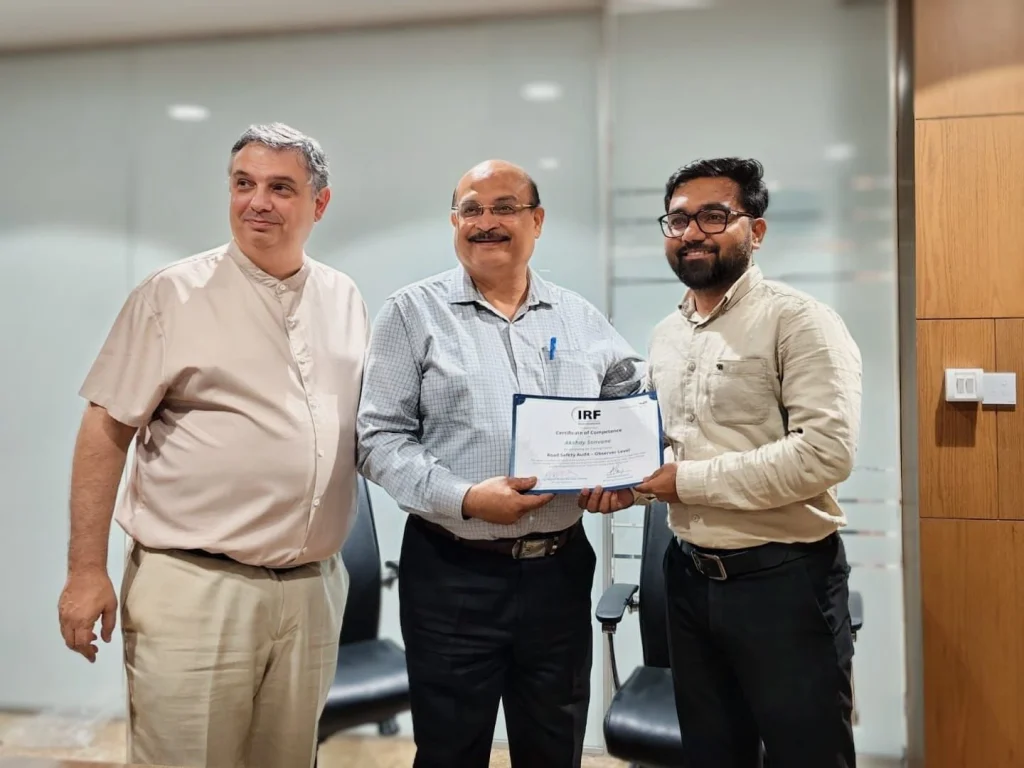
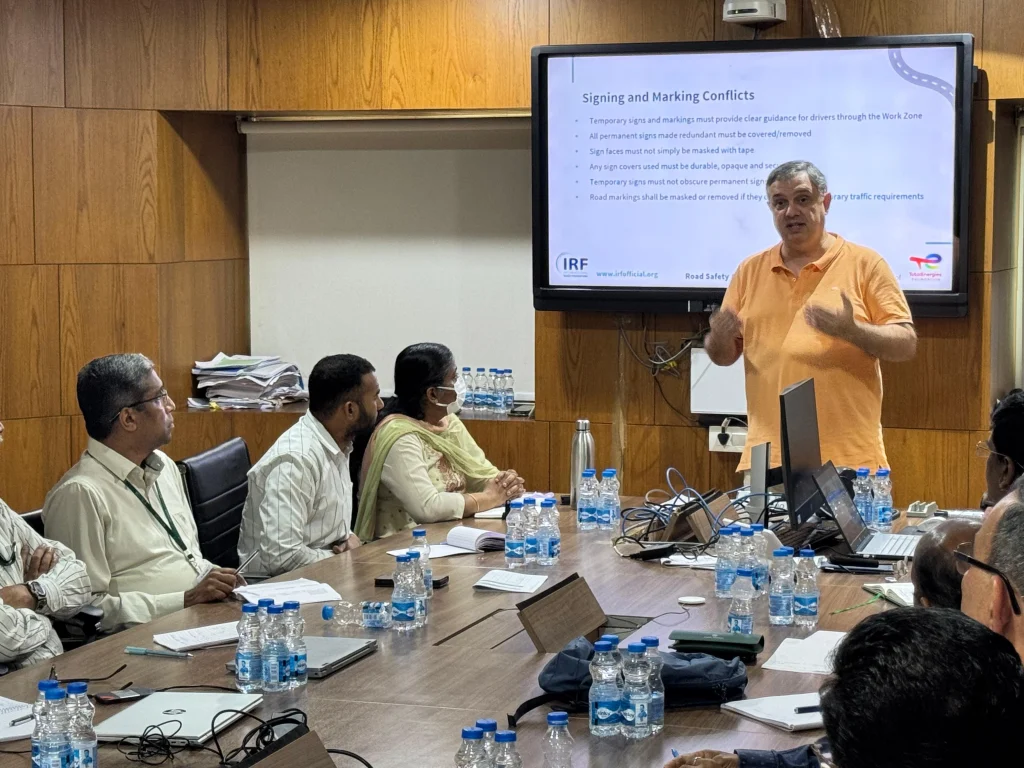

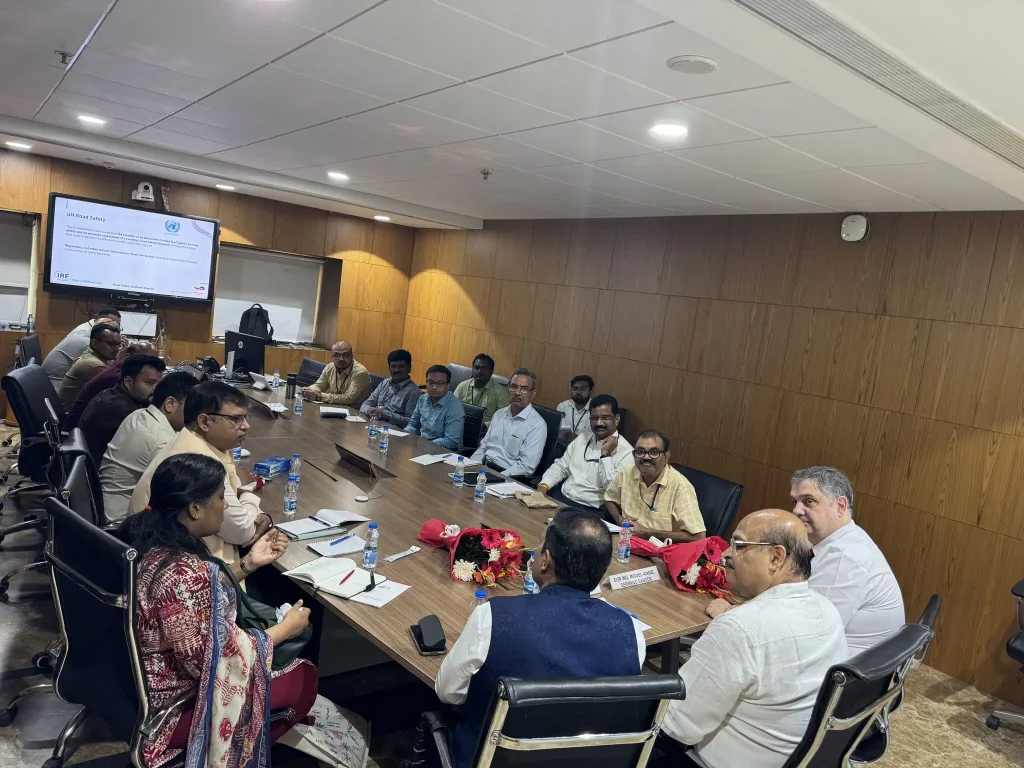
Regional Stakeholders Convene in Marrakech for Safe and Inclusive Road Design Workshop
Marrakech, Morocco | 8 to 9 October 2025 — Senior government officials, development partners and road safety experts from across North and West Africa gathered this week in Marrakech for a two-day stakeholder consultation workshop on the Safe and Inclusive Road Design in North and West Africa Project which aims to improve road safety in Morocco, Mauritania, and Senegal. It will update outdated design standards to better protect vulnerable road users like pedestrians, cyclists, and the elderly.
Organised by the International Road Federation (IRF) and the United Nations Economic and Social Commission for Western Asia (UNESCWA) with support from the UN Road Safety Fund (UNRSF) and the Islamic Development Bank (IsDB) the workshop marks a key milestone in the co-development of safer, more inclusive national road design standards in Mauritania, Morocco, and Senegal.
Integrating Road Safety at the Design Stage
Opening the workshop, Benacer Boulaajoul, General Director of Morocco's National Road Safety Agency, observed that "the design of road infrastructure has a decisive influence on road safety performance. However, this aspect does not always receive the priority it deserves".
Malick Fall, Director of Transport Prevention and Safety at Mauritania’s Ministry of Equipment and Transport (MET), highlighted how the project supports the country’s efforts to align road safety policies with global best practices.
He emphasised that Mauritania, with over 6,000 km of roads and more than 2,000 km under development, aims to systematically integrate safety into every design phase.
“We are committed to revising our road design standards to reflect international norms. This means incorporating features such as safer shoulders, pedestrian and cyclist facilities, and design-based speed management to reduce crashes and protect all users”, Malick Fall
Senegal's Head of Delegation Mamoudou Alassane Camara concurred, noting that Senegal has the opportunity to build road infrastructure that saves lives by integrating safety at the design stage. "Investing in safer roads today means ensuring a future of responsible and sustainable mobility for all".
Financing Safer Roads
In addition to the IsDB, representatives from four financial institutions active in the region joined the consultation workshop, underscoring how road safety interlocks with their overarching framework for sustainable transport lending.
Derran Williams, Senior Health and Safety Adviser at the European Bank for Reconstruction and Development (EBRD), presented a development finance perspective on embedding road safety within infrastructure investments.
He outlined the EBRD’s safety requirements for funded projects and the importance of aligning all multilateral development banks’ environmental and social frameworks with robust road safety standards.
Williams shared a case study on a 200-km dual carriageway project jointly implemented by EBRD and the Asian Development Bank (ADB), where a road safety audit revealed critical concerns. These include inadequate crossings, reduced local connectivity, and hazards involving at-grade rail intersections and livestock on the road.
Engineering Safer Highways
Hind Meziane, from Autoroutes du Maroc, provided a technical deep dive into Morocco’s updated geometric design standards for safe motorway projects.
Drawing from the Instructions sur les Conditions Techniques d’Aménagement des Autoroutes de Liaison (ICTAAL) framework, Meziane explained how design parameters such as visibility, curvature, gradient, drainage and interchange spacing directly impact road safety and user comfort.
She emphasised that safe road design requires anticipating driver behavior, optimising visibility and preventing sudden changes in alignment that can surprise drivers. Her presentation highlighted Morocco’s focus on design coherence, which avoids long straight alignments, ensuring proper sight distance, managing slopes to control speed, and planning interchanges in strategic and safe locations.
A Shared Vision for Safer, More Inclusive Roads
The second day of the workshop included an immersive overview of safe and resilient design standards applied to large-scale road project, the rehabilitation and widening of National Road 8, East of Marrakech.
Participants followed this with a visit to an active worksite. This allowed participants to explore how road safety is addressed at every stage of the project, through a host of measures ranging from median separation to a dedicated lane for two-wheelers.
Participants reiterated the need to institutionalise safer design practices, build local technical capacity, and scale pilot projects that demonstrate measurable safety benefits, particularly where vulnerable road users are concerned.
“The UN places road safety at the top of its agenda, given that the human and economic costs of lack of sufficient and effective road safety measures remain very high throughout North and West Africa. This process is not just about technical guidelines, it’s about building a foundational culture of safety where infrastructure serves people and ensures every journey is a safe one”, - Adel Alghaberi, UNESCWA.

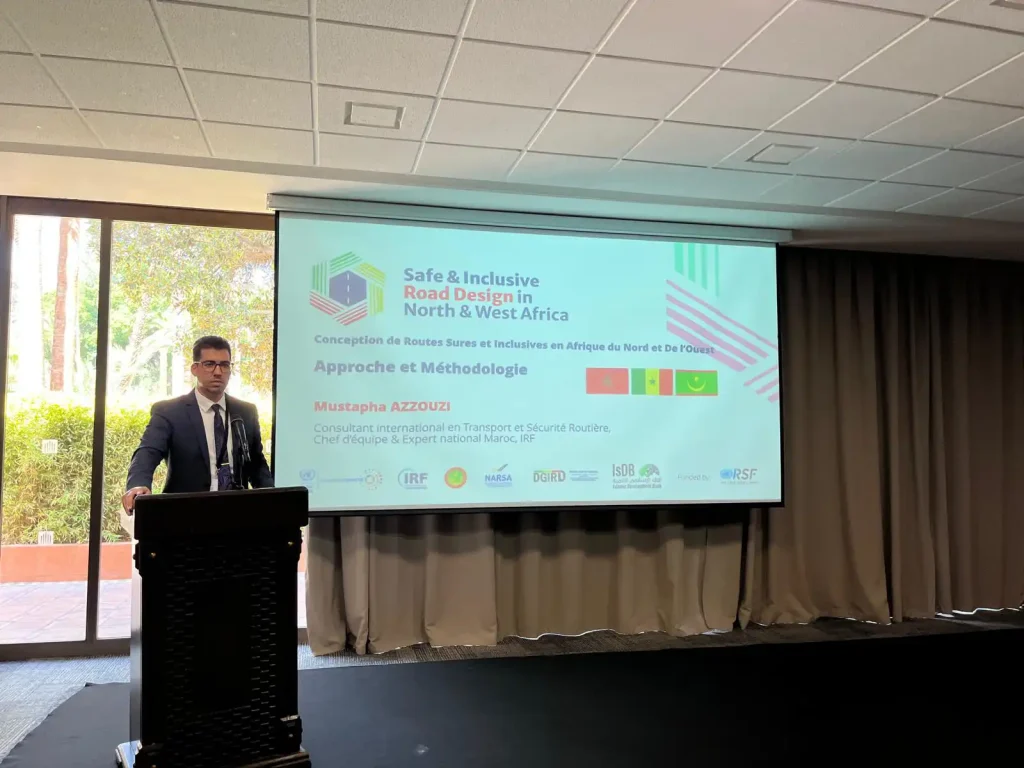
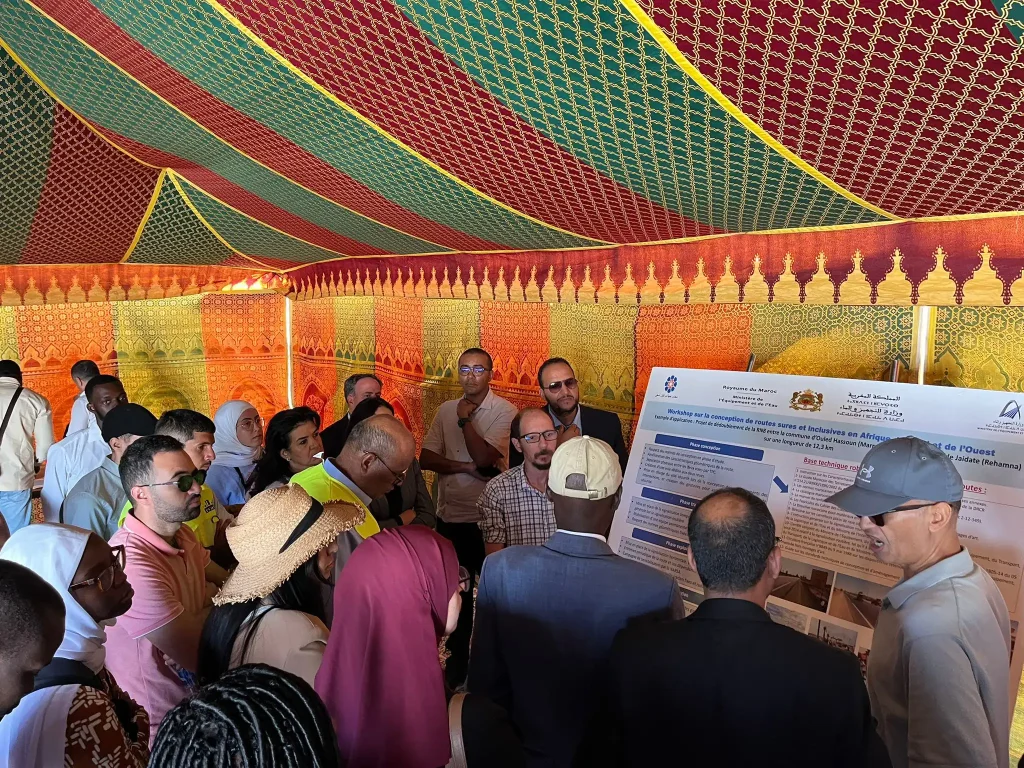
Registrations for the IRF Annual Conference are open
Registrations are open for the IRF Annual Conference, set from 2-4 December as a 3-day online experience that will gather experts from the sector from all over the world.
With the theme “Reimagining Roads for Inclusive, Safe, Green and Efficient Mobility”, the Conference brings IRF members and partners together each year to share knowledge, spark practical solutions and drive transformative change in how mobility systems are designed, managed, and experienced.
Read the transcription of IRF Acting Director General Gonzalo Alcaraz's message:
Hello everyone, my name is Gonzalo Alcaraz, Acting Director General of the International Road Federation.
From the 2nd to the 4th of December, the Online IRF Annual Conference will bring together our global community of road transport change-makers and will explore how the sector is shaping the future of mobility.
With the first UN Decade of Sustainable Transport starting in 2026, this conference also offers a vital opportunity to set the stage and demonstrate how our sector can make a meaningful contribution to its success.
It is my pleasure to invite you to join us for this online gathering. It’ll be a chance to learn from best practices, discover new innovations and connect with peers worldwide. We look forward to welcoming you. Registration is now open.
For more information about the Annual Conference, visit this page.
Ten Step Plan in Senegal: Training on Road Safety Engineering Begins
Dakar, Senegal | 29 September to 1 October - Road crashes are the biggest killer of young people worldwide, and the injury burden impacts every country on earth. In total, 1.19 million people are killed and 30-50 million people are injured in preventable road crashes every year. Pedestrians, cyclists, and motorcyclists account for nearly half of all road deaths and a significant proportion of injuries.
Road infrastructure plays a significant role in influencing the likelihood or severity of a crash. An undivided road with head-on risk built-in, a high-speed road with dangerous roadsides or an urban road with no facilities for safe pedestrian or cyclist movement are just some examples of road features that impact crashes. The cost of road trauma is estimated to be 3-6% of national GDP each and every year in low and middle-income countries.
Unlocking the potential of safer roads to save lives, save money and achieve the UN Global Road Safety Performance Targets is the focus of the Ten Step Plan for Safer Road Infrastructure Project.
The project is a collaborative effort between the Government of Senegal, through the Ministry of Infrastructure, Land, and Air Transport (MITTA) and ANASER and the consortium joined by the IRF along with the International Road Assessment Programme - iRAP, PIARC (World Road Association) and LASER International, with support from the Private Infrastructure Development Group (PIDG) and FIA Foundation.
The three-day training event
The training focused on ‘road safety engineering,’ with a particular emphasis on the new PIARC Road Safety Manual. The event saw 20 participants from a range of key organizations, including the Senegal National Road Safety Agency (ANASER), Ageroute, the General Directorate of Road Infrastructure and Accessibility (DGIRD), universities, and the Executive Council of Urban Transport in Dakar (CETUD). This session is the first of a series of in-person trainings and complements the ongoing electronic training platform, which currently serves over 150 participants.
The Ten Step Senegal Project is a three-year initiative funded by the United Nations Road Safety Fund (UNRSF). The project aims to improve road infrastructure safety by strengthening capacities through training, updating road design standards, and implementing targeted strategies.
The project works to create synergies with other internationally funded road projects, provide key performance indicators and recommendations, and support the implementation of the National Road Safety Plan.
The Ten Step Plan for Safer Road Infrastructure Project for safer roads
The World Health Organization estimates that road crashes claim more than 3,500 lives every year in Senegal, and result in over 40,000 more injuries, with a national economic burden of US $1.4 billion. National data shows road crashes are the leading cause of death among young people aged 15 to 24, and the second leading cause among 25-39 year-olds, after AIDS.
Senegal is only the second country in the Africa to use the United Nations Road Safety Collaboration (UNRSC) Ten Steps approach, following its award-winning implementation in Tanzania. The Ten Step Plan framework has been produced by the United Nations Road Safety Collaboration (UNRSC) partners to support countries seeking to implement initiatives in relation to the “improved safety of road infrastructure and broader transport networks”, the UN Convention on Road Traffic and Road Signs and Signals, and the achievement of UN Member States agreed Global Targets 3 and 4 for safer new and existing roads.
